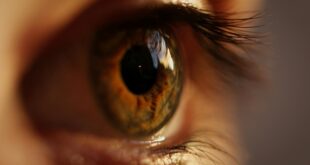Androgenetic alopecia, commonly known as female pattern baldness, is a type of hair loss in women. The most comprehensive kind of hair loss in women is female pattern baldness. It’s comparable to male pattern baldness, yet women’s hair loss patterns differ from men’s. Balding in women is passed down through the generations. Hair loss affects up to two-thirds of women after menopause. So, hormones are also responsible for female pattern baldness.
There are some causes and early signs of balding in women. So, consult your doctor or a dermatologist if you find you’ve signs of balding. Thus, you’ll be able to stop hair loss and perhaps restore hair faster if you begin treatment as soon as possible. In this article, you can know the signs, causes and treatments of female pattern baldness.
Signs of balding in women
Female pattern baldness is separate from male pattern baldness. If you’re thinking, “am I balding” then there are some following signs of balding in women for knowing you:
- Mostly, hair thins on the scalp’s top and crown in female pattern baldness. It generally begins with a broadening of the hair part in the middle. This hair loss pattern is known as the Christmas tree pattern.
- Hair loss in women seldom proceeds to complete or near-complete baldness, as it does in males.
- Except for typical recession, which occurs to everyone as time goes, the front hairline stays unaffected.
- While hair on the face is thick, hair on the head is thinner, if higher androgens are the reason.
On the whole, there are no itching or skin blisters on the scalp.
Causes
Every strand of hair is held in place by a follicle, a small hole in the epidermis. Generally, baldness happens as the hair follicle shrinks over age, ending in finer, shorter hair. The follicle eventually stops producing new hair. The causes of female pattern baldness are linked to:
- Male or female pattern baldness in the family history
- Ageing
- DHT
- Variations in androgen levels
- Several medications, like estrogenic oral contraceptives
- Lots of blood loss during menstrual cycles.
Treatments
So, if you have female pattern baldness, then how to treat balding or how to fix balding? Well, there have some following treatments for female pattern baldness.
Medicines
Minoxidil is a topical medicine that is used on both women and men to treat baldness. The therapy is applied to the scalp daily and will help to encourage hair growth and prevent future hair loss.
It will take almost six months to a year for Minoxidil to show obvious benefits. When a person quits taking the medication, hair loss may reappear.
Hair transplant
A hair transplant may be a choice for certain ladies. Hair transplantation can be done using a variety of procedures. Hair loss usually affects just a few regions of the scalp. A doctor takes hair from an area with good hair development and transplants it to another region where hair is lacking during a hair transplant. Hair loss is typically unaffected in the region where the doctor transplants the hair. The operation is carried out while the sufferer is awake and takes many hours. To avoid discomfort, a local anesthetic will be administered.
Laser therapy
Several women may choose to attempt at-home laser therapy for hair baldness. Such gadgets promote hair regrowth by delivering low amounts of laser light. According to several surveys, Low-level laser light treatment, according to Trusted Source, can encourage hair growth in both women and men.
Final verdict
Female pattern baldness can be upsetting and hurt a person’s self-image and self-esteem. Extreme hair loss in women for female pattern baldness has to be discussed with a dermatologist or doctor, who can evaluate the reason and best treatment choice. Rapid detection can aid in the development of a treatment strategy that will prevent additional hair loss.
 HammBurg Be informed with latest news, reviews, entertainment, lifestyle tips, and much more.
HammBurg Be informed with latest news, reviews, entertainment, lifestyle tips, and much more.




